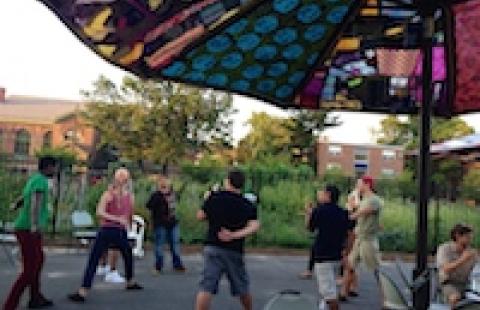What were the specific goals of this creative economy project? Describe the community development challenge or opportunity that your project was designed to address:
1. Create art in community gardens
2. Expand community awareness of KNOX community gardens
3. Support the gardeners creative expression and pride in place
4. Beautify the city
5. Implement education programs about gardening and ecology
If the goals change over time, please describe how:
At times one goal or another takes precedence but the goals are pretty much consistent.
Who was involved in this project and what did they do? (be sure to include the partners from outside of the creative sector and how local voices were included):
Connecticut Office of the Arts, DECD; provided two Art Leadership Creative Placemaking Grants (4K) and (20K).
Greater Hartford Arts Council, provided a grant for an educational position and project support for art in the gardens.
The KNOX foundation provides in kind support and the board provides project support at times depending on needs.
The Community Gardeners provide time, audience, participation, help.
Local corporations contribute to garden clean up days in the spring.
The artist provides project leadership and labor and in kind contributions. Some work is paid through grants, some is volunteer.
How does this project relate to a larger community development strategy?
The Artist in Residence project relates directly to the core of KNOX' mission: Using horticulture as a catalyst for community engagement, KNOX forges partnerships between residents, businesses and government, providing leadership to build greener, stronger, healthier and more beautiful neighborhoods in Hartford. The Artist in Residence has allowed creativity and the arts to enter into the mix in surprising and joyful ways. This in turns brings in new audiences/community members, new public support and new sources for funding.
What projects or places, if any, inspired your approach to this creative economy project?
The resident artist was aware of the rich tradition of art in community gardens on the west coast, and in NYC, but noticed the community gardens in Hartford were very austere. Her own artistic practice involved agriculture and art so this was a logical step. There was an exhibition at the Queens Museum in New York called Art Util that was also an inspiration.
